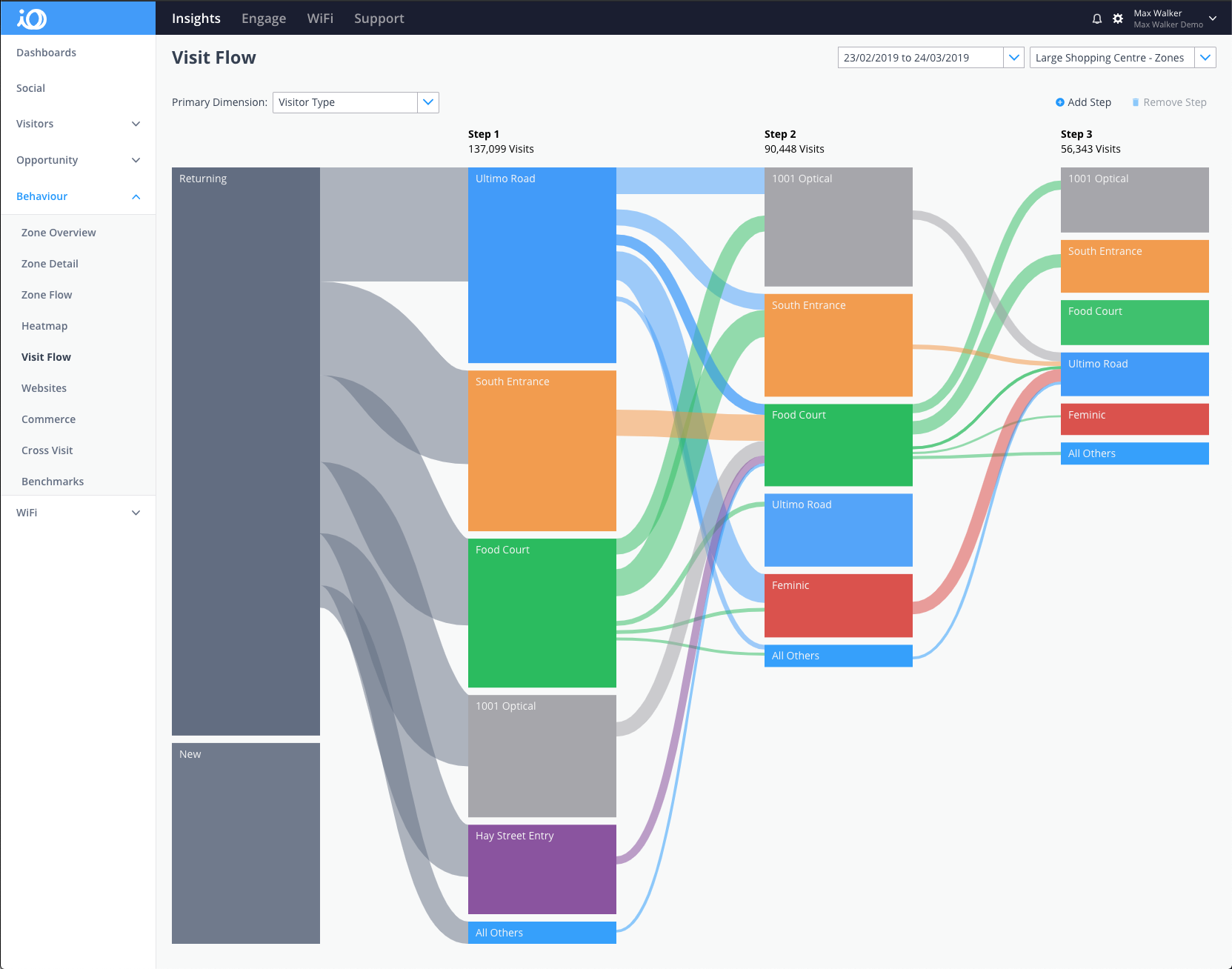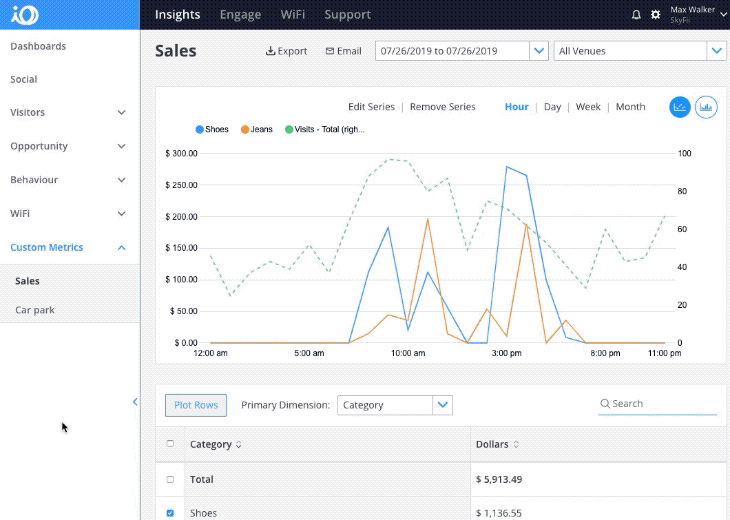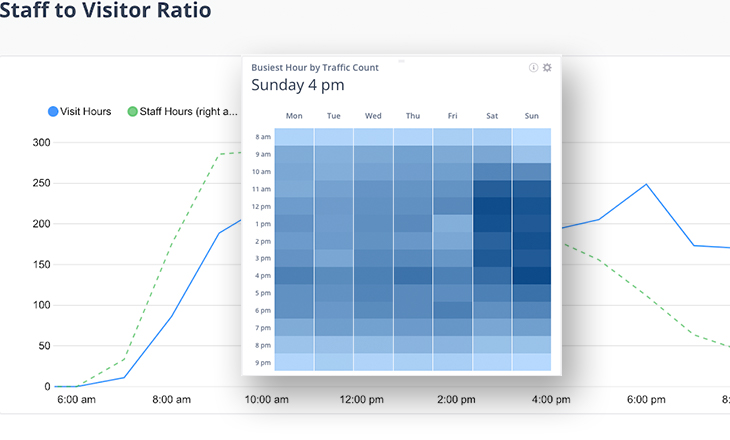LiDAR in Retail: 3 Ways to Transform Your Shopper Analytics
.jpg?length=1200&name=blog-header-1200x600%20(22).jpg)
Ever wonder how brick-and-mortar stores can rival the data insights of e-commerce platforms? Enter LiDAR technology: the game-changer in retail analytics.
With pinpoint accuracy and real-time insights, LiDAR capabilities bridge the gap. This technology offers physical retailers the data prowess akin to web analytics.
Discover the three transformative ways LiDAR and motion analytics redefine the retail landscape and elevate shopper experiences.
Ready to see how LiDAR and retail analytics can drive business growth for your retail business? Let’s explore.
What is LiDAR Technology, and Why is it Relevant to Retail?
LiDAR, or Light Detection and Ranging, is a technology that uses laser light pulses to measure distances to objects. This advanced method captures precise, three-dimensional information about the surroundings.
Why LiDAR is vital for retail:
- Shopper Analytics: It offers detailed insights into shopper movements and behaviors, enhancing the retail experience.
- Precision: Unlike traditional methods, LiDAR’s accuracy in gauging spatial information is unparalleled.
- Crowd Analytics: It can monitor customer flow and density, which is essential for store layout and promotional placements.
There are several advantages of LiDAR. Incorporating LiDAR into retail analytics paves the way for a smarter, data-driven shopping environment.
Top 3 Ways LiDAR is Transforming Shopper Analytics in Retail
LiDAR is not just for autonomous vehicles; it’s reshaping retail experiences. Dive in to uncover the top three ways LiDAR technology is redefining shopper analytics and setting new standards in retail.
1. Understanding Shopper Movement
Harnessing the power of LiDAR for shopper analytics unveils new depths of understanding about customer behaviors in real-time. Here’s how:
- Real-time, Granular Insights: LiDAR provides intricate data on movement, occupancy, and dwell time across store areas.
- Shopper Journeys: Grasping the shopper’s path is foundational for smarter retail experiences. It’s not just about where they go; it’s about knowing product interactions, staff engagements, and asset touchpoints.
- Data-Driven Decision Making: Retailers can maximize customer journey patterns by cross-referencing them with sales data to pinpoint product performance, shopper preferences, and brand interactions.

2. Influencing Shopper Behavior
Beonic’s vast experience enhancing the shopper experience is further strengthened with LiDAR’s motion analytics. Here’s how:
- Tailored Experiences: With tools like guest WiFi and IO Engage, Beonic ensures shoppers receive timely, relevant information, rewards, and offers.
- Merchandising Precision: Insights into movement patterns, dwell times, and purchase behaviors empower retailers. With this data, you can:
- Optimize product placement.
- Display arrangements where they are more impactful.
- Strategically place signage, guiding customers effortlessly.
- Adjust your store layout swiftly and effectively, eliminating guesswork.
Motion analytics also allows you to make these planning decisions quickly and with greater certainty.
Also Read: How Motion Analytics Transforms Retail & Customer Experience

3. Enhancing Shopper Experience
Creating an efficient, safe, and enjoyable environment is vital in retail. LiDAR technology plays a pivotal role in this. Here’s how:
- Optimal Staffing: With real-time insights on flow and crowd density, retailers can adjust staffing needs instantly. Beonic’s staff-to-shopper ratio report ensures employees are always where they’re most needed, whether in aisles or at checkouts.
- Safety Protocols: Historical data analysis can predict congestion and traffic flows. In emergencies, such insights are invaluable. Knowing where people will congregate and their likely exit routes ensure clear pathways and safety signage placements.
- Asset Placement and Utility: Real-time data reveals how often and by whom use kiosks, product finders, and service desks. Understanding these pathways also allows for better asset placement.
- Checkout Efficiency: Nobody likes long waits. The Beonic platform alerts staff about queue lengths and wait times, guiding shoppers to available registers. This not only enhances efficiency but significantly elevates the shopping experience.

Make Your Retail Business Smarter
Leveraging the power of LiDAR isn’t just about collecting data; it’s about drawing actionable insights from it. Here’s what’s up for grabs:
- Real-time Insights: Retailers get a real-time pulse on store activities through motion analytics. From foot traffic to dwell time, these insights break down complex shopper behaviors into understandable chunks.
- Efficiency & Profitability: Reliable real-time analytics means making informed decisions. These insights pave the way for improved store layouts, optimal staffing, and targeted marketing efforts. In turn, you drive profitability.
- Informed Planning: With consistent data collection, retailers can spot long-term behavioral patterns of their customers. This is invaluable for future planning, from inventory decisions to store expansions.
- ROI Potential: Think of LiDAR as a long-term investment. While there’s an upfront cost, the returns come in the form of increased sales, enhanced customer loyalty, and reduced operational inefficiencies.
Also Read: How Data Can Help Retail Property Managers Make Smarter Leasing Decisions
Ready to Accelerate Your Retail Success with LiDAR Technology?
Leveraging LiDAR might just be the edge your store needs. Experience the transformative benefits of LiDAR and shopper analytics in modern retail.
Schedule your demo with one of our Beonic experts. Explore how this tech can redefine your retail landscape and truly understand its potential.
LiDAR Technology FAQ
Answers to common questions about LiDAR technology.
What Is LiDAR Technology?
LiDAR (Light Detection and Ranging) is a remote sensing technology. It uses laser light to measure distances with high accuracy.
Here’s a more detailed overview:
- Principle: LiDAR can determine precise distances by emitting thousands of laser pulses every second and measuring how long they take to return after hitting an object.
- 3D Mapping: The data collected by LiDAR isn’t just about distance. When combined with other data points, it creates detailed three-dimensional maps or models of environments.
- Accuracy: What sets LiDAR apart is its accuracy. It can capture minuscule details, making it invaluable for detailed spatial analysis.
- Versatility: LiDAR systems can be mounted on various platforms, including satellites, airplanes, drones, and ground-based vehicles. Each serves specific mapping and analysis needs.
- Applications in Retail: In the retail sector, LiDAR assists in analyzing customer movements and store layouts for optimized merchandise placements. It also aids in creating interactive and responsive in-store experiences.
What Is LiDAR Used For?
LiDAR technology has various applications, including:
- Mapping terrain in geology and forestry.
- Autonomous vehicles for navigation.
- Architectural 3D modeling.
- Renewable energy
- In retail, shopper analytics from LiDAR gauges store traffic and enhances shopping experiences.
How Does LiDAR Work?
LiDAR operates on a simple principle. For example, LiDAR technology:
- Emits laser beams toward a target.
- Captures the reflected light with a sensor.
- Calculates the distance based on the time taken for the beam to return.
- Uses resulting data to produce 3D maps or datasets.
